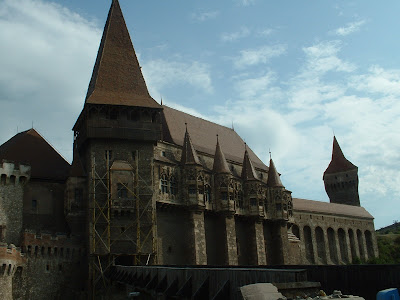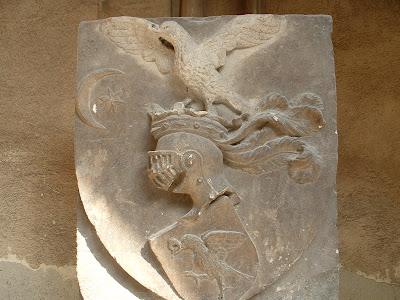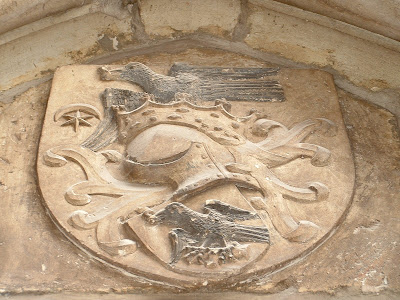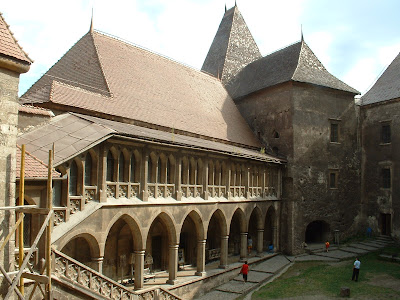Hunyad Castle
The Hunyad Castle (Romanian: Castelul Huniazilor or Castelul Corvineştilor, Hungarian: Vajdahunyad vára) is a castle in present-day Hunedoara, Romania.
It is a relic of the Hunyadi dynasty. In the 14th century, the castle was given to a Vlach knyaz Serb, or Sorb by the German-Roman emperor and king of Hungary Zsigmond as severance, restored between 1446 and 1453 by John Hunyadi. It was built in Gothic style, but has Baroque and Renaissance architectural elements. It features tall and strong defence towers, an interior yard and a drawbridge.
Built in the 14th century, on the place of an old fortification, on a rock below which flows the small river Zlasti, the castle is a large building, with tall and diversely coloured roofs, towers, windows and balconies adorned with carvings in stone.
In the castle yard, near the chapel built also during Iancu de Hunerdoara's ruling, is a well 30 meters deep. The legend says that this fountain was dug by three Turkish prisoners to whom liberty was promised if they reached water. After 15 years they completed the well, but their captors did not keep their promise. It is said that the inscription on a wall of the well means "you have water, but not soul". Specialists, however, have translated the inscription as "he who wrote this inscription is Hasan, who lives as slave of the giaours, in the fortress near the church".






























